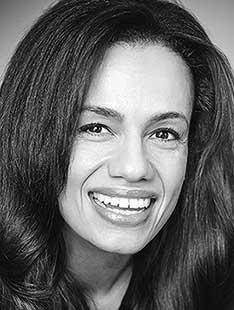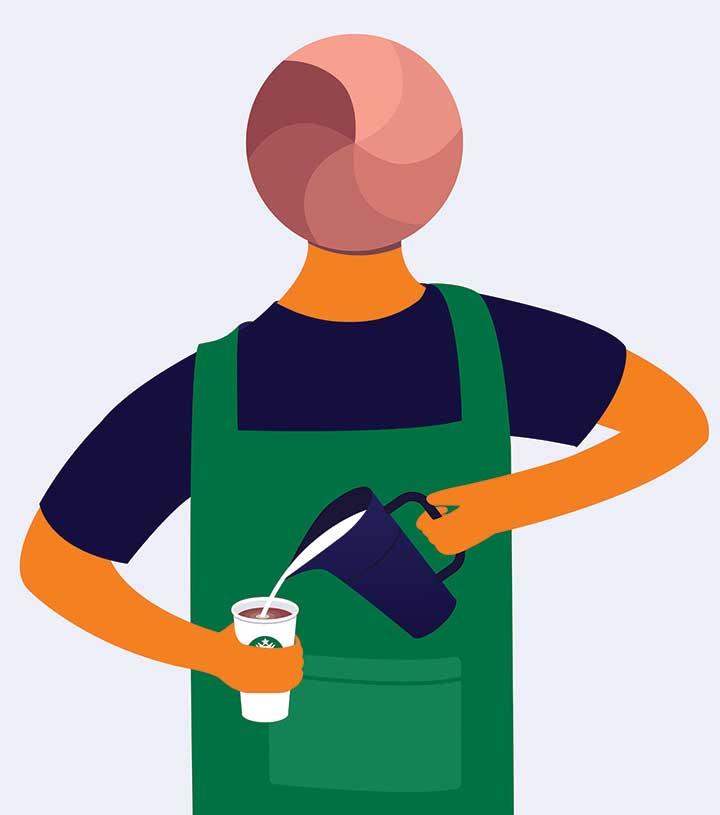What I Learned: Teaching Baristas About Bias

In a Philadelphia Starbucks last April, two black colleagues sat at a table awaiting a third person before ordering, until one of the men asked for the code to use the restroom. That request, both innocuous and universally human, was denied; police officers were called, and both men were arrested for “defiant trespassing.” After eight hours, the men were released without charge — but not before viral video captured by fellow patrons prompted national outrage about how racial bias endures, specifically the dehumanization and policing of black Americans based on perceptions of criminality.
Starbucks’ corporate response was swift and unprecedented. On May 29, 2018, six weeks after the incident, 8,000 stores closed and some 175,000 baristas spent four hours exploring a curriculum on implicit bias and racial anxiety co-created by Perception Institute, the organization I co-founded and lead.
Perception Institute is a consortium of researchers and strategists that helps organizations reduce discrimination linked to race, gender, and other identity differences. Since 2008, we’ve worked largely in sectors where bias has the power to create real harm — with judges, police officers, health-care providers, teachers, journalists, and tech companies — to turn research on how our brains process difference into institutional and interpersonal practices that reduce and in some cases prevent biased responses.
When Starbucks announced its plan to respond to the incident in Philadelphia, many experts, including me, were skeptical. Implicit bias — our brains’ automatic, instant associations of stereotypes about a particular group — is shaped over a lifetime of experiences, cultural history, and media narratives. At best, a four-hour workshop can create awareness about bias, but actually reducing racial bias requires long-term systemic work. Addressing incidents like what took place in Philadelphia requires policy and practice change, which Starbucks recognized.
May 29 had the potential to be meaningful if the exercise addressed the vague policy that led to the incident: leaving access to the valued bathroom code to individual discretion. Starbucks’ answer to this was to define anyone who crosses the threshold of the store as a customer, with the attendant benefits of bathroom usage before or after purchase.
After making this important policy change, serious constraints remained. Time was the most significant. The curriculum also had to be self-guided by a very diverse group of baristas, some of whom also could be on the receiving end of bias.
The painful but pivotal racial moment we were in and the possibility of influencing how the 100 million weekly Starbucks customers might be treated outweighed our concerns about these things. May 29 had to be successful not just in expanding perceptions of who “belongs” at a coffee shop, but for what it would mean for a company to build a muscle to navigate race in a highly visible way: Where Starbucks leads, many others follow.
Even more enticing for our merry band of researchers was the opportunity to expand public discussions about race beyond implicit bias to include other social psychological phenomena like racial anxiety — the physiological stress response we may feel when interacting with another racial group. Because our behaviors around race are often rooted in stereotypes that trigger emotions and innate fears, racial anxiety helps explain the defensiveness, potential escalation, and extreme polarization that can accompany cross-racial interactions. In linking these concepts, we hoped to explain not just how our brains and bodies respond to difference, but to use mind science to debunk long-held problematic assumptions that colorblindness, an effort to de-emphasize or treat race as irrelevant, is the best way to practice racial fairness.
On the day of the workshop, at 2 p.m. in their respective time zones, Starbucks stores around the country closed. Staff at each store broke into small working groups of three to five members and received three tools: a guidebook to drive conversation, an iPad preloaded with educational videos, and a notebook for personal reflection. The full curriculum, which was released publicly the following day, featured senior leaders renewing calls for Starbucks to be a place where all should feel welcome. Concomitantly, NAACP Legal Defense Fund President Sherrilyn Ifill provided baristas with a crucial history about the legacy of discrimination in public accommodation in America and the haunting mental and physiological experience of what it means to not belong.
May 29 had to be successful not just in expanding perceptions of who “belongs” at a coffee shop, but for what it would mean for a company to build a muscle to navigate race in a highly visible way: Where Starbucks leads, many others follow.
Situated between those conversations was our learning session on implicit bias and racial anxiety. Through video shot with Mellody Hobson ’91, vice chair of the Starbucks board, we used interactive exercises to demonstrate the power of unconscious networks in our brains and how difficult it is to override them in the moment. Our brains process upward of 11 million bits of information unconsciously in the same amount of time we process roughly 40 bits of information consciously. To build knowledge we create schemas, or mental shortcuts that help us process data quickly and efficiently. Schemas about groups of people — usually descriptive traits or attitudes — are called stereotypes. Explaining how our brains react to identity differences helps make the point that implicit biases do not make us bad people; they make us human. The critical step is to realize which biases may be operating implicitly so that our explicit values, rather than our implicit biases, dictate our behavior and decisions.
The stress of racial anxiety, meanwhile, is also at work. For people of color, the anxiety can be worry that the other person may stereotype or discriminate against them. For whites, the fear is that something they say or do may be perceived as racist. Ironically, racial anxiety does not prevent discriminatory behavior. Instead, it often leads to avoidance or defensive behavior that has the opposite effect.
Through scenarios involving retail settings, Starbucks staff were able to understand that implicit bias and racial anxiety are both risks. Implicit bias may lead a barista to interpret a request to use the bathroom differently depending on who is asking. For example, the two men in Philadelphia were deemed suspicious and denied access, whereas I, a mother of two young children, have never had a problem using the restroom without ordering first. A barista with high racial anxiety may also convey different levels of respect and dignity — unconsciously signaling who is welcome, who belongs, and who does not. If the brains of both the barista and the customer enter fight-or-flight mode, the situation can escalate quickly.
Each exercise the baristas powered through was grounded in proven strategies for reducing bias. Instead of training Starbucks staff members not to notice race or to rely on their ability to recognize their own blindspots, we encouraged them to learn to actively embrace difference and de-link stereotypes from racial groups. Individual and interpersonal practices alone are not sufficient. Yet individual interactions do matter, and with practice delinking stereotypes and engaging actively with people from other groups, the baristas — and the rest of us — can create more positive experiences that in turn help reduce both bias and anxiety.
What I learned through working with Starbucks and other clients over the last decade is that while most Americans reject racism, we don’t have strong muscles to navigate complex, often ambiguous or implicit, racial dynamics. In the month after the Philadelphia incident, police also were called on a black female graduate student sleeping in a common room at Yale, on Native American students on a college tour who didn’t seem to “belong,” on a group of black women leaving their Airbnb rental, and on two Spanish-speaking Americans in Montana.
After each incident, the callers disavowed racism and maintained that race had nothing to do with why the police were summoned. Our unconscious brains, however, don’t always cooperate with our beliefs or assertions: Neuroscience and social psychology tell us that our brains are quick to link social identities to harmful stereotypes, most powerfully around race and ethnicity. Despite our values and aspirations, our brains simply cannot be colorblind and aren’t great at being objective. Our assumptions about how we practice racial fairness are flawed.
Luckily, our brains, like muscles, can be strengthened to build a new fairness practice — one that allows us to recognize people both as members of the social groups with which they identify and as unique individuals. Institutions, including our corporate citizens, must bear the responsibility to change policies and practices to limit our reliance on implicit biases to make decisions. But institutions are made up of people who must do their part, too — it just takes training.
A Call for Alumni Voices
Throughout the year, PAW will publish essays by alumni on a wide range of topics that could help other alumni navigate through careers, family issues, and ethical dilemmas, among other things. Essays can be serious or funny, but they should have a strong voice. Send your idea — not a completed essay — to pawessay@princeton.edu.












No responses yet